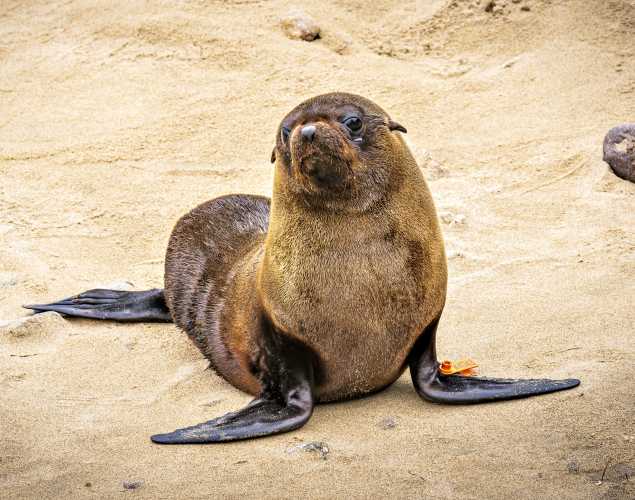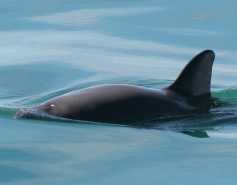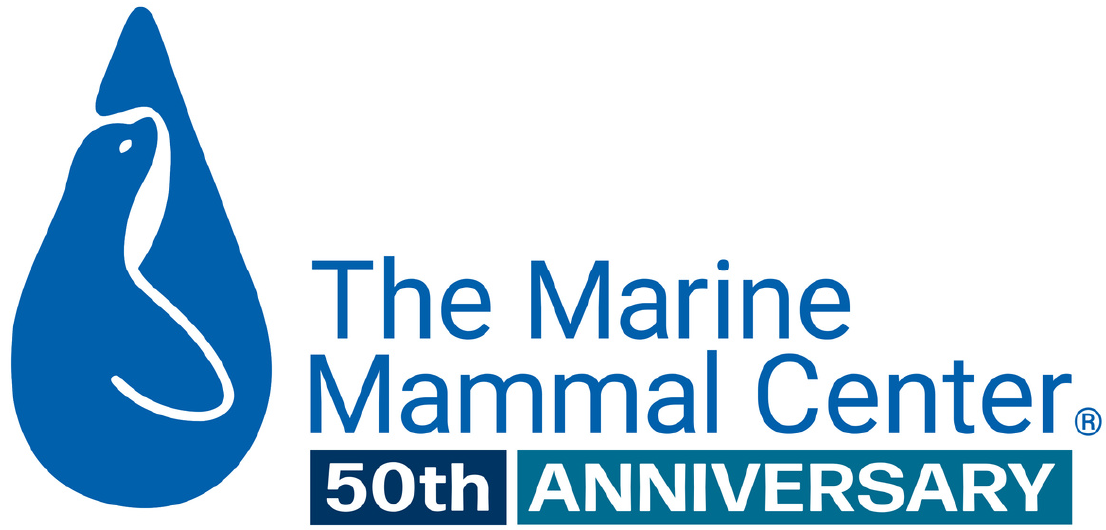
Ecology and Conservation of Pinnipeds in Latin America: Guadalupe Fur Seal
- Species conservation
Abstract
The Guadalupe fur seal (Arctocephalus philippii townsendi or A. townsendi) was at the brink of extinction due to overhunting during the eighteenth and nineteenth centuries. Today, the Guadalupe fur seal remains classified as an Endangered species by Mexican law and as Threatened under the US Endangered Species Act of 1973. Currently, the entire population is estimated at around 40,000 individuals, with a single well-established breeding site on Guadalupe Island. Around 20 years ago, it was discovered that Guadalupe fur seals had recolonized San Benito Archipelago, which is 260 km southeast of Guadalupe Island. However, breeding activity at this site continues to be negligible with <1% of pups born here each year. It is likely that recovery of the Guadalupe fur seal depends on prey availability, which is influenced by oceanographic factors in the California Current Ecosystem (CCE). In this regard, differences in foraging habits have been found between the two colonies (Guadalupe and San Benito) in recent years and within the Guadalupe colony across decades. The population recovery rate has been lower than that observed for other pinnipeds that inhabit the CCE. Additionally, there are recent records of unusual mortality events along the US west coast; higher neonatal mortality due to starvation at Guadalupe Island; and marked reduction of the colony size at San Benito, which are all related to anomalous warm water events. These threats are intensified and more frequent because of climate change, which is the most significant threat to the species, especially given that over 99% of Guadalupe fur seals breed at one island, making it more vulnerable to this impact.
Elorriaga-Verplancken, F.R., Norris, T., Acevedo-Whitehouse, K., Gálvez, C., Amador-Capitanachi, M.J. and Landa-Garza, M., Guadalupe Fur Seal (Arctocephalus philippii townsendi, Brunner 2004). Ecology and Conservation of Pinnipeds in Latin America, p.77.
photo © Steve Sayles
Related Publications
{"image":"\/Animals\/Wild\/Other species\/Vaquita-Olson-NOAA.jpg","alt":"vaquita","title":"Protecting Critically Endangered Vaquita from Entanglement Through Field Capture","link_url":"https:\/\/www.marinemammalcenter.org\/publications\/protecting-critically-endangered-vaquita-from-entanglement-through-field-capture","label":"Research Paper"}

Protecting Critically Endangered Vaquita from Entanglement Through Field Capture
Read More{"image":"\/Animals\/Patients\/Guadalupe fur seals\/2020\/cropped-images\/gfs-pippin-by-bill-hunnewell-c-the-marine-mammal-center-noaa-permit-18786-111-120-3738-2920-1602702191.jpg","alt":"Guadalupe fur seal Pippin","title":"Understanding the Impacts of Climate Change on Threatened Guadalupe Fur Seals","link_url":"https:\/\/www.marinemammalcenter.org\/publications\/understanding-the-impacts-of-climate-change-on-threatened-guadalupe-fur-seals","label":"Research Paper"}

Understanding the Impacts of Climate Change on Threatened Guadalupe Fur Seals
Read More{"image":"\/Animals\/Wild\/Guadalupe fur seal\/cropped-images\/guadalupe-fur-seal-photo-c-marc-webber-113-2-3934-3072-1618437568.jpg","alt":"Guadalupe fur seal","title":"A New Guadalupe Fur Seal Colony in the Gulf of California?","link_url":"https:\/\/www.marinemammalcenter.org\/publications\/new-guadalupe-fur-seal-colony-in-the-gulf-of-california","label":"Research Paper"}

{"image":"\/Animals\/Wild\/Other species\/cropped-images\/galapagos-sea-lion-shutterstock-954-376-2988-2334-1617750524.jpg","alt":"Galapagos sea lion","title":"Mycoplasmas in Galapagos Sea Lions and Their Association with Other Respiratory Pathogens","link_url":"https:\/\/www.marinemammalcenter.org\/publications\/occurrence-of-mycoplasmas-in-galapagos-sea-lions","label":"Research Paper"}

Mycoplasmas in Galapagos Sea Lions and Their Association with Other Respiratory Pathogens
Read MoreRelated News
{"image":"\/Animals\/Patients\/Hawaiian monk seals\/2025\/cropped-images\/d-ru28release-exam-at-ke-kai-ola111025photo-by-giancarlo-rulli-c-the-marine-mammal-center-noaa-permit-24359-0-0-1270-992-1764620886.jpg","alt":"","title":"Bird Flu Vaccine Trial Offers Hope for Protecting Hawaiian Monk Seals","link_url":"https:\/\/www.marinemammalcenter.org\/news\/bird-flu-vaccine-trial-may-offer-hope-for-protecting-hawaiian-monk-seals","label":"News Update","date":"2025-12-01 08:13:00"}

Bird Flu Vaccine Trial Offers Hope for Protecting Hawaiian Monk Seals
December 1, 2025
Read More{"image":"\/Animals\/Wild\/Hawaiian monk seal\/cropped-images\/hms-wild-photo-1-c-noaa-pifsc-hmsrp-35-0-1270-992-1759760452.jpg","alt":"A Hawaiian monk seal rests on its side on a sandy beach.","title":"Where Do Hawaiian Monk Seals Live? And Other \u2018\u012alio Holo I Ka Uaua Trivia","link_url":"https:\/\/www.marinemammalcenter.org\/news\/where-do-hawaiian-monk-seals-live-and-other-ilio-holo-i-ka-uaua-trivia","label":"News Update","date":"2025-10-06 00:00:00"}

Where Do Hawaiian Monk Seals Live? And Other ‘Īlio Holo I Ka Uaua Trivia
October 6, 2025
Read More{"image":"\/Animals\/Patients\/Sea otters\/2025\/cropped-images\/so-mooring-release-2-laurie-miller-c-the-marine-mammal-center-USFWS-permit-MA101713-1-80-0-1270-992-1757003194.jpg","alt":"A southern sea otter rests in the ocean after being released from rehabilitative care.","title":"Entangled in Ocean Trash, Sea Otter Mooring Gets a Second Chance at Life","link_url":"https:\/\/www.marinemammalcenter.org\/news\/entangled-in-ocean-trash-sea-otter-mooring-gets-a-second-chance-at-life","label":"Patient Update","date":"2025-09-05 02:00:00"}

Entangled in Ocean Trash, Sea Otter Mooring Gets a Second Chance at Life
September 5, 2025
Read More{"image":"\/Animals\/Wild\/California sea lion\/cropped-images\/csl-release-4-5-24photo-by-chris-deimler-c-the-marine-mammal-center-138-0-1270-992-1745348188.jpg","alt":"Four young California sea lions walk on the beach toward the ocean.","title":"Achievements in Ocean Health","link_url":"https:\/\/www.marinemammalcenter.org\/news\/achievements-in-ocean-health","label":"News Update","date":"2025-04-23 10:20:00"}

